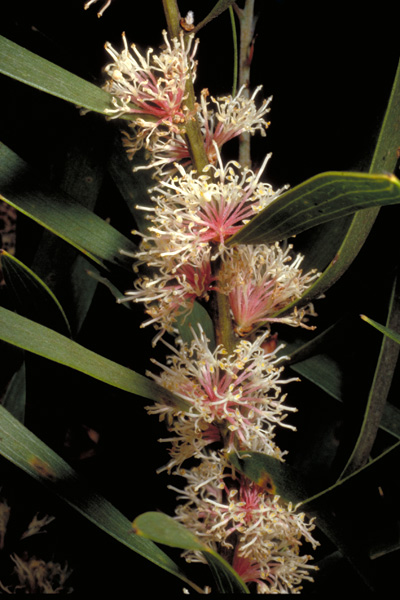General Description:
Hakea dactyloides is a small to medium shrub, usually of upright habit. Leaves are narrow-lanceolate to oblong in shape, up to 100 mm long with three to five longitudinal veins. The new foliage growth is often an attractive rusty-brown colour. The small flowers occur clusters in the leaf axils and are seen mainly in spring. The usual flower colour is white but a form with pale pink and white flowers is known. Flowers are followed by woody seed pods about 25mm long by 20mm wide containing two winged seeds, the usual number for all Hakea species. The pods do not shed the seed until stimulated to do so by environmental conditions (eg after a bushfire).
This species was one of the first Australian plants introduced into cultivation in England. It is reasonably common in cultivation where it has proven to be reliable in a range of well-drained soils. It adapts to climates ranging from temperate to tropical and is able to tolerate extended dry conditions once established. It will grow successfully in full sun or semi shaded positions and the flowers are attractive to honeyeating birds.
Hakea dactyloides is easily grown from seed which does not require any pretreatment prior to sowing. The species can be grown from cuttings but these may not be particularly easy to strike.

Hakea dactyloides; Common white form
Photos: Brian Walters

Hakea dactyloides; Unusual pink form
Photos: Brian Walters
 Australian Native Plants Society (Australia)
Australian Native Plants Society (Australia)